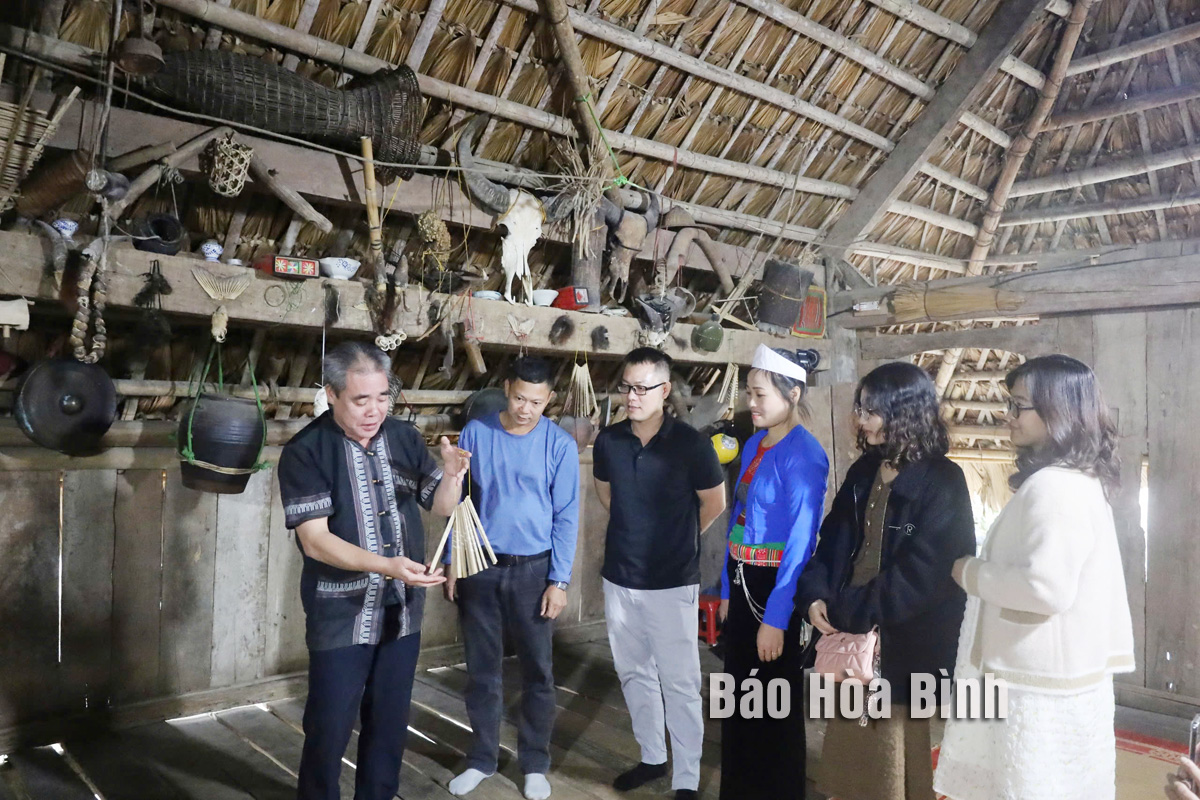
Muong calendar, known as sach doi, is an ancient folk knowledge system developed through observations of the movement of the pleiades star. This unique calendar consists of 12 bamboo sticks, each representing a lunar month. Specific days within each month are marked with distinct symbols, guiding locals in determining auspicious and inauspicious days for important activities.
The bamboo calendar is still preserved and displayed by the Muong community in
Mo hamlet, Binh Thanh commune, Cao Phong district, where locals continue to
apply its wisdom in their daily lives.
According to Muong legend, the Muong Bi calendar dates back to the era of King
Dit Dang, the earliest ruler of the Muong people. It is believed to have first
emerged in Muong Bi, an area historically linked to the early days of the Hung
Kings’ reign.
As one
of Vietnam’s indigenous ethnic groups with a rich history, the Muong people
developed their own sophisticated timekeeping system. The Muong Bi calendar is
remarkably detailed, dividing time into precise units: a day consists of 16
hours (each Muong hour is roughly equivalent to 1.5 Kinh hours), a month spans
29-30 days structured into three weeks of 10 days each, and a year is divided
into 12 months across four quarters.
The
calendar deeply influences both Muong society and daily life. However, its
application is geographically specific - local proverbs such as "ngay lui thang
toi” (days regress, months advance) reflect agricultural traditions unique to
Muong Bi and do not necessarily apply to other Muong regions.
Thanks
to its historical and cultural significance, the Muong bamboo calendar of Hoa
Binh province, alongside the Khai Ha Festival, the Keeng Loong dance of the
Thai people, and the Xen Ban Festival in Mai Chau, has been officially
recognised as National Intangible Cultural Heritage by the Ministry of Culture,
Sports and Tourism.
Beyond
the calendar, the Muong people boast a rich cultural legacy, including the
iconic Muong drums, gongs, script, and traditional villages. These elements not
only preserve the unique identity of the Muong community but also attract
researchers, archaeologists, and folklore enthusiasts, as well as visitors
eager to experience Hoa Binh’s vibrant cultural heritage.
Phong Phu commune, Tan Lac district of Hoa Binh province, is widely regarded as the cultural heartland of the Muong ethnic group. Among its many traditional communities, Luy Ai hamlet (formerly Ai hamlet) stands out as a rare location where the customs and way of life of the Muong Bi people remain largely intact.
The Truong Kha temple festival, a distinctive cultural event held every three years in Vu Ban township, Lac Son district, returned recently with vibrant rituals and folk traditions of the Muong people. Located next to the Buoi River in the Muong Trao fields, the Truong Kha Temple is dedicated to the three Kun Dol deities, revered for teaching farming techniques, irrigation, weaving, and protecting the harvest.
The demand for spaces serving community activities of residents in various areas across Hoa Binh city has been satisfied as local cultural houses now feature modern, spacious facilities thanks to the effective implementation of Resolution No. 49/NQ-HDND issued on December 28, 2021 by the city People's Council, which approved the plan for reorganising, converting, and allocating land for the construction, repair, and expansion of cultural houses in Hoa Binh’s villages and residential areas until 2025.
At the end of May, the Hoa Binh Provincial Ethnic Arts Troupe organized a series of performances for residents in Region 2 and Region 3 communes across the province. Bringing art to ethnic communities in remote, isolated, and especially disadvantaged areas has become a meaningful activity. These are not merely artistic performances but also journeys to disseminate cultural values, enrich spiritual life, and contribute to preserving the cultural identity of ethnic minorities.
In recent years, alongside the development of a tourism-oriented economy, the traditional brocade weaving craft of the Mong people in Pa Co Commune, Mai Chau district has been gradually preserved and promoted. It has become a unique indigenous cultural feature, contributing to improving the livelihoods of the ethnic minority community.
Hop Tien commune, Kim Boi district, Hoa Binh province is home to nearly 1,260 households with a population of over 5,700 people, 98% of whom are of the Muong ethnic group. Besides economic development, the commune places special emphasis on preserving and promoting the cultural identity of the Muong people.



